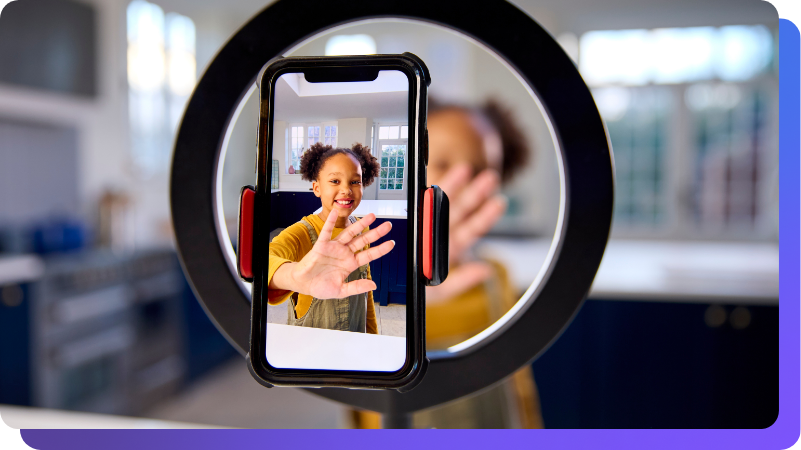-
Aalbers, S., Fusar-Poli, L., Freeman, R., Spreen, M., Ket, J., Vink, A., Maratos, A., Crawford, M., Chen, X., & Gold, C. (n.d.). Music therapy for depression (review). Cochrane Database Syst. Rev. CD. doi:10.1002/14651858.CD004517.pub3
-
American Psychological Association. (2022, October). Stress in America: Concerned for the future, beset by inflation. https://www.apa.org/news/press/releases/stress/2022/concerned-future-inflation
-
Bibb, J., Castle, D., & Newton, R. (2015). The role of music therapy in reducing post meal related anxiety for patients with anorexia nervosa. J. Eat. Disord., 3, 50.
-
Bodeck, S., Lappe, C., & Evers, S. (2022). Tic-reducing effects of music in patients with Tourette’s syndrome: Self-reported and objective analysis. J. Neurol. Sci., 442, 120444. doi:10.1016/j.jns.2022.120444
-
Bowling, D. L. (2021). Biological principles for music and health. PsyArXiv. https://psyarxiv.com/fxsnz
-
Bowling, D. L., Purves, D., & Gill, K. Z. (2018). Vocal similarity predicts the relative attraction of musical chords. Proc. Natl. Acad. Sci., 115(1), 216–221.
-
Carnegie, M. (2023, February). Are Gen Z the most stressed generation in the workplace? BBC. https://www.bbc.com/worklife/article/20230210-are-gen-z-the-most-stressed-generation-in-the-workplace
-
Dickson, G. T., & Schubert, E. (2019). Music on prescription to aid sleep quality: A literature review. Front. Psychol., 10, 1337. doi:10.3389/fpsyg.2019.01337
-
Doelling, K. B., Assaneo, M. F., Bevilacqua, D., Pesaran, B., & Poeppel, D. (2019). An oscillator model better predicts cortical entrainment to music. Proc. Natl. Acad. Sci. U.S.A., 116(20), 10113–10121. doi:10.1073/pnas.1816414116
-
Feng, F., Zhang, Y., Hou, J., Cai, J., Jiang, Q., Li, X., Zhao, Q., & Li, B. (2021). Can music improve sleep quality in adults with primary insomnia? A systematic review and network meta-analysis. Int. J. Nurs. Stud., 118, 103921. doi:10.1016/j.ijnurstu.2021.103921
-
Geretsegger, M., Elefant, C., Mössler, K. A., & Gold, C. (2014). Music therapy for people with autism spectrum disorder. Cochrane Database Syst. Rev. CD004381. doi:10.1002/14651858.CD004381.pub3
-
Gioia, T. (2006). Work songs. Duke University Press.
-
InformedHealth.org [Internet]. Cologne, Germany: Institute for Quality and Efficiency in Health Care (IQWiG); Depression: How effective are antidepressants? [Updated June 2022]. Available from: https://www.ncbi.nlm.nih.gov/books/NBK361016/
-
Jespersen, K. V., Pando-Naude, V., Koenig, J., Jennum, P., & Vuust, P. (2022). Listening to music for insomnia in adults. Cochrane Database Syst. Rev., 8, CD010459. doi:10.1002/14651858.CD010459.pub3
-
Jia, R., Liang, D., Yu, J., Lu, G., Wang, Z., Wu, Z., Huang, H., & Chen, C. (2020). The effectiveness of adjunct music therapy for patients with schizophrenia: A meta-analysis. Psychiatry Res., 291, 113238.
-
Juslin, P. N., & Laukka, P. (2003). Communication of emotions in vocal expression and music performance: Different channels, same code? Psychol. Bull., 129(5), 770–814.
-
Kühlmann, A. Y., de Rooij, A., Kroese, L. F., van Dijk, M., Hunink, M. G., & Jeekel, J. (2018). Meta-analysis evaluating music interventions for anxiety and pain in surgery. Br. J. Surg., 105(7), 773–783. doi:10.1002/bjs.10853
-
Large, E. W., & Snyder, J. S. (2009). Pulse and meter as neural resonance. Ann. N. Y. Acad. Sci., 1169, 46–57. doi:10.1111/j.1749-6632.2009.04550.x
-
Lu, G., Jia, R., Liang, D., Yu, J., Wu, Z., & Chen, C. (2021). Effects of music therapy on anxiety: A meta-analysis of randomized controlled trials. Psychiatry Res., 296, 113657. doi:10.1016/j.psychres.2020.113657
-
Mallik, A., Chanda, M. L., & Levitin, D. J. (2017). Anhedonia to music and mu-opioids: Evidence from the administration of naltrexone. Sci. Rep., 7, 41952. doi:10.1038/srep41952
-
National Institute of Mental Health. (2023, March). Mental illness. https://www.nimh.nih.gov/health/statistics/mental-illness
-
Poeppel, D., & Assaneo, M. F. (2020). Speech rhythms and their neural foundations. Nat. Rev. Neurosci., 21, 322–334.
-
Särkämö, T., Tervaniemi, M., Laitinen, S., Forsblom, A., Soinila, S., Mikkonen, M., Autti, T., Silvennoinen, H., Erkkilä, J., Laine, M., Peretz, I., & Heitanen, M. (2008). Music listening enhances cognitive recovery and mood after middle cerebral artery stroke. Brain, 131(3), 866–876. doi:10.1093/brain/awn013
-
Schaffert, N., Janzen, T. B., Mattes, K., & Thaut, M. H. (2019). A review on the relationship between sound and movement in sports and rehabilitation. Front. Psychol., 10, 2447.
-
Tang, Q., Huang, Z., Zhou, H., & Ye, P. (2020). Effects of music therapy on depression: A meta-analysis of randomized controlled trials. PLoS One, 15(1), e0228666. doi:10.1371/journal.pone.0228666
-
Tang, Q., Zhou, Y., Yang, S., Thomas, W. K., Smith, G. D., Yang, Z., Yuan, L., & Chung, J. (2021). Effect of music intervention on apathy in nursing home residents with dementia. Geriatr. Nurs., 42(1), 174–180.
-
Terhardt, E. (1984). The concept of musical consonance: A link between music and psychoacoustics. Music Percept., 1(3), 276–295.
-
van Noorden, L., & Moelants, D. (1999). Resonance in the perception of musical pulse. J. New Music Res., 28(1), 43–66.
-
Wu, Q., Chen, T., Wang, Z., Chen, S., Zhang, J., Bao, J., Su, H., Tan, H., Jiang, H., Du, J., & Zhao, M. (2021). Effectiveness of music therapy on improving treatment motivation and emotion in female patients with methamphetamine use disorder: A randomized controlled trial. Subst. Abus., 42(1), 112–119.
-
Zatorre, R. J. (2015). Musical pleasure and reward: Mechanisms and dysfunction. Ann. N. Y. Acad. Sci., 1337(1), 202–211.



















